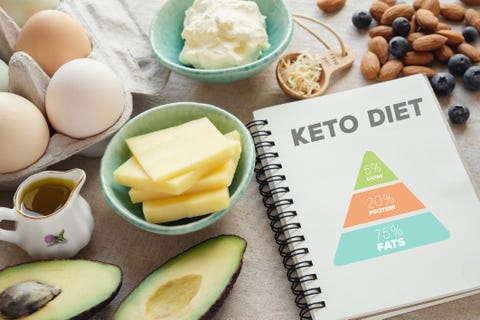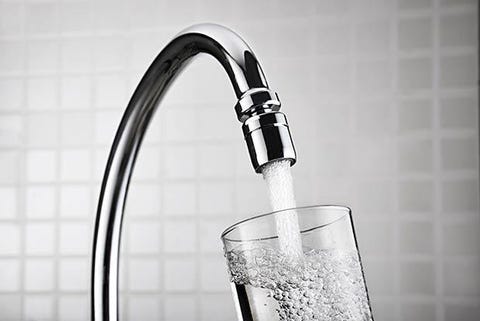
So you decided to take up the keto diet. It was going great—until you noticed you’re a little (or a lot) thirstier than usual.
If you’re dealing with a dry mouth that feels like the sands of the desert, don’t worry: It’s a normal side effect of the keto diet. Increasing your fat intake to about 80 percent of your daily calories and slashing carbs to below 50 net grams per day can take a toll on the body’s hydration.
“As the metabolism shifts in the first couple weeks of ketosis, the body undergoes changes in electrolyte and fluid balance,” says Ginger Hultin, RD and spokesperson for the Academy of Nutrition and Dietetics. “Some people find themselves feeling excessively thirsty and urinating more than usual.” Drinking tons of water and low-carb fluids is essential when you’re on the keto diet.
Here’s what to know about keto dry mouth, the excessive thirst that comes with piling bacon and nut butter onto your plate all day.
Why, exactly, does keto make my mouth so dry?
When you eat carbohydrates, those carbs are converted into glycogen, which the body uses for energy. Every gram of glycogen also stores approximately 3 grams of water, explains Karissa Long, CHC, certified global integrative nutrition coach, keto expert, and author of Clean Keto Lifestyle.
So you can guess what happens when you take up keto and drastically reduce your carb intake: As your body burns up its glycogen stores on its way to ketosis—aka fat-burning mode—it also loses a bunch of the water it was storing. Hello, thirst.

Getty ImagesThitareeSarmkasat
There’s another reason for keto dry mouth: changes in your body’s insulin levels.
“When you ingest carbohydrates and sugar, your pancreas releases insulin in order to combat the ensuing spike in blood sugar,” Long says. “High insulin levels in the body trigger your kidneys to hold onto water and sodium.” When you eliminate carbs and sugar from your diet, your insulin levels drop, and your kidneys release this stored sodium and water. As water exits your body, you may find yourself getting thirsty.
What should I do about keto dry mouth?
Well, for starters… Get a glass of water.
“Listen to your body and drink when thirsty,” Hultin says—just don’t go downing sugary sports drinks. “If your goal is to be in ketosis, many sports drinks or electrolyte replacements won’t be appropriate because the sugar content will be too high.”
You can also add some salt to your fluids for a natural electrolyte enhancer, without the sugar and carbs. Long opts for adding a pinch of pink Himalayan salt to her water.

Getty imagese
If you’re concerned about any aspect of your fluid intake, talk to your physician.
“A doctor or registered dietitian is the best guide for exactly how much water and electrolyte replacements you need as a unique individual, because this will depend on your stature, diet, the climate in which you live, and the types and amounts of physical activity you do,” Hultin says.
And since you know that dehydration is a side effect of keto, prepare for it. Bring a water bottle with you to work, and when you go out to run errands. Consume foods that contain water and are keto-friendly, like cucumbers, green leafy veggies, avocado, and berries. You might also notice some cramping as a result of dehydration. Besides drinking water, you can ease the discomfort with stretching, yoga, massage, or even Epsom salts in the bath.
And if all this sounds unpleasant, you can always opt for this “boring” diet instead.
Source: Read Full Article